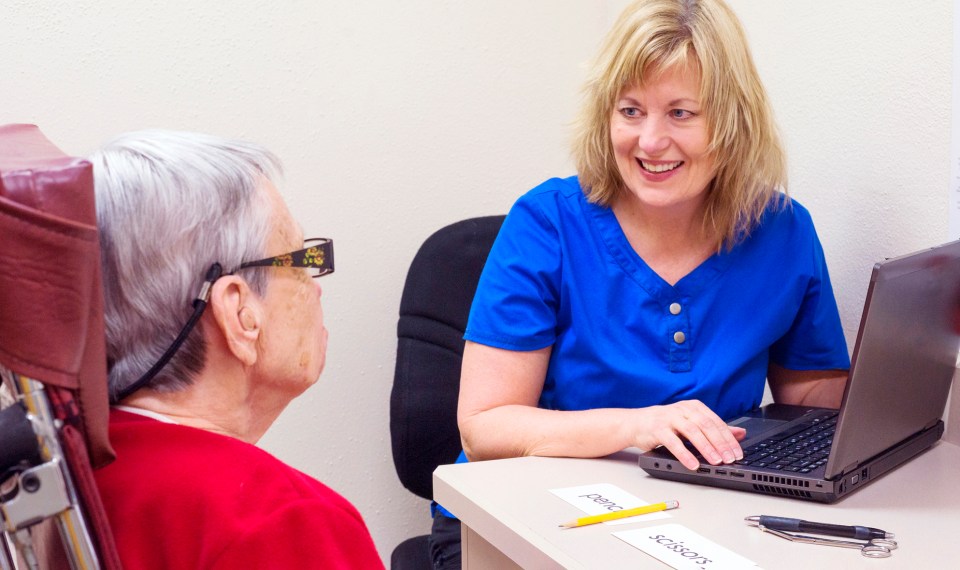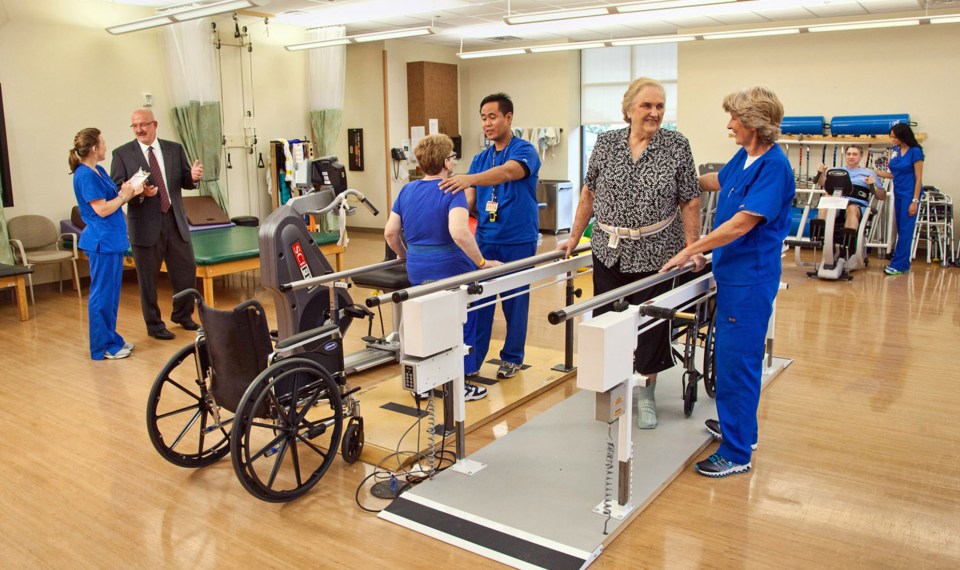Rod Miller is used to spending all day in a vehicle.
Years ago, he patrolled the busy streets of Marion County, Florida, waiting to answer the call to protect and serve. These days, you can find him cruising through Ocala subdivisions en route to the home of his next patient—often a survivor of a stroke, traumatic brain injury or illness that requires physical rehabilitation.
Miller retired his police badge in 1998, ending a 10-year law enforcement career. The move left him wondering how else he could serve his community. He needed a change and wanted to help others, so he thought, “Why not healthcare?”
Miller joined the physical therapy field more than 20 years ago and has spent the last decade working in home health. As a physical therapist assistant at Encompass Health, he knows this job is one he was called to do.
“As a former officer, I was already accustomed to showing up at strangers’ houses trying to help keep them safe,” he said. “There are lots of similarities with that job and what I’m doing now.”
Working with what you’ve got
While his schedule is more predictable now than in law enforcement, the patients can be anything but. Creating, communicating and implementing a care plan for each unique patient is a process that keeps him busy.
The first step for a therapist is to assess the patient’s goals, which means asking questions. What tasks does the person struggle with? What basic movements are challenging? The physical therapist should understand what the patient wants to accomplish and how physical therapy could make that goal a reality.
“If a patient says they are having trouble standing long enough to cook, I know we need to work on building leg strength,” Miller said. “Then I communicate that goal to the patient’s occupational therapist. The entire care team works together on the same issues, whether it’s helping someone cook, do laundry or take their dog for a walk.”
Working as a home health PT or PTA presents challenges that are unique to the home care setting. While Encompass Health inpatient rehabilitation hospitals are equipped with advanced technology and therapy equipment, more improvisation is required in the home of a patient. Standard weights may have to be substituted with books or therapy bands, and the size and layout of a home can determine which exercises are possible.
The therapist must consider, “What can we do within this environment?” It’s also important to ensure a patient understands why an exercise is being prescribed, and if it’s safe to attempt it when their home health PTA is away.
“I know the patient may try to exercise when I’m gone,” he said. “You can’t just teach them an exercise; they need to know why they should learn it, where there are risks of injury and how it can help them get stronger. The exercises should be both functional and safe.”
Putting your heart into it
In addition to the physical demands of the job, Rod explained that a career in home health doesn’t come without emotional tolls.
“Like any career in healthcare, it can be taxing. You’re there to do physical therapy, but there’s downtime while the patient is resting and you have time to talk,” he explained. “You can ask questions about the folded flag on the mantle or the family photo on the wall. Getting to know your patient becomes part of the therapy session.”
Miller explained that Encompass Health’s core values all resonate in his work, but one stands out: the tenant of doing what’s right. It’s a value that has guided both his law enforcement and healthcare career.
“You can’t do everything you want during every visit; there’s only so much time. You have to make decisions about which therapy techniques to try and how to make the best use of their time,” Miller said. “But if you do the right thing by your patients, they’ll have the best shot at getting better. You can feel proud of that.”
The content of this site is for informational purposes only and should not be taken as professional medical advice. Always seek the advice of your physician or other qualified healthcare provider with any questions you may have regarding any medical conditions or treatments.



